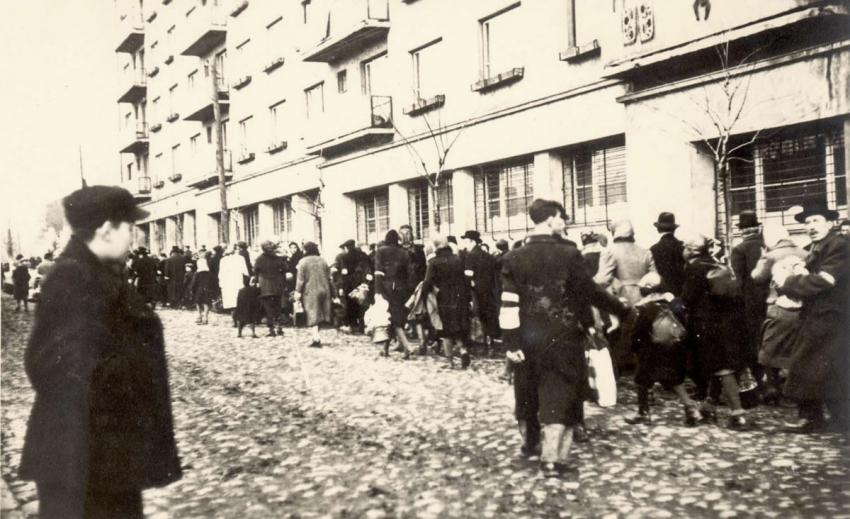Oswiecim was a city of 12,000 residents, almost half of whom were Jews. The Jewish community was very active in the political, cultural and educational realms.
The Germans conquered Oswiecim in September 1939. German soldiers, accompanied by ethnic Germans (Volksdeutsche), began attacking the Jews and plundering their property. In the first days of the German occupation one of the synagogues was burned down. Decrees against the Jews restricted their mobility and confiscated their property, and throughout 1940 they were concentrated in an open quarter of the city. Hundreds were deported to forced labor camps. Despite the persecution the Jews continued to maintain cultural activities, and even managed to absorb refugees deported to Oswiecim from other areas.
In April 1941 the Germans ordered that the Jews leave Oswiecim for other cities in Silesia, particularly Sosnowiec and Bendzin. During the deportation the Jews were allowed to bring some of their belongings. Some rented wagons upon which they loaded their possessions. The deportation lasted for seven days, after which the Jewish community of Oswiecim ceased to exist. During the deportations of the summer and autumn of 1942, the Jews of Oswiecim were sent, along with the Jews of the ghettos where they had been deported, to the death camps.
Outside of Oswiecim the Germans built Auschwitz, the complex of death and labor camps in which more than 1 million Jews, one hundred thousand Poles, tens of thousands of Russians, gypsies, and others were murdered.
Yad Vashem Photo Archives 70CO3







